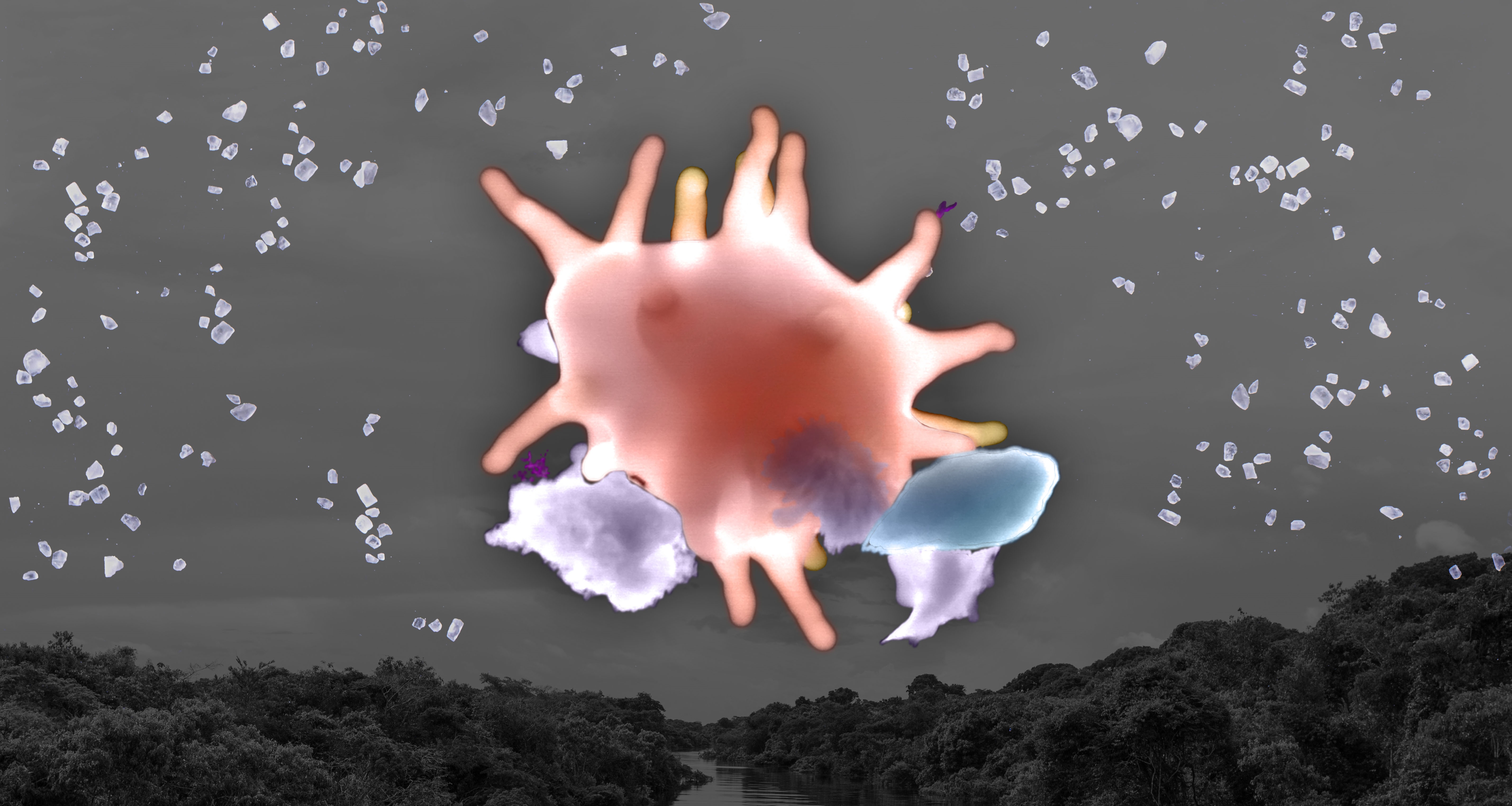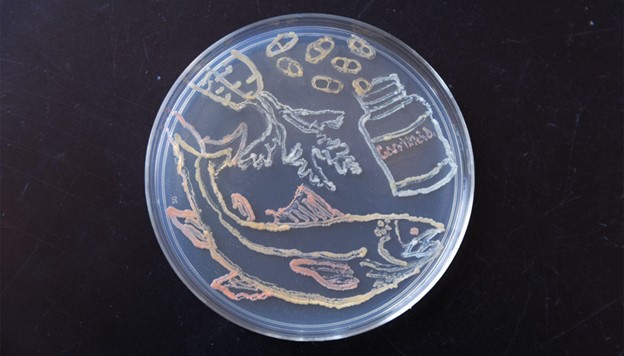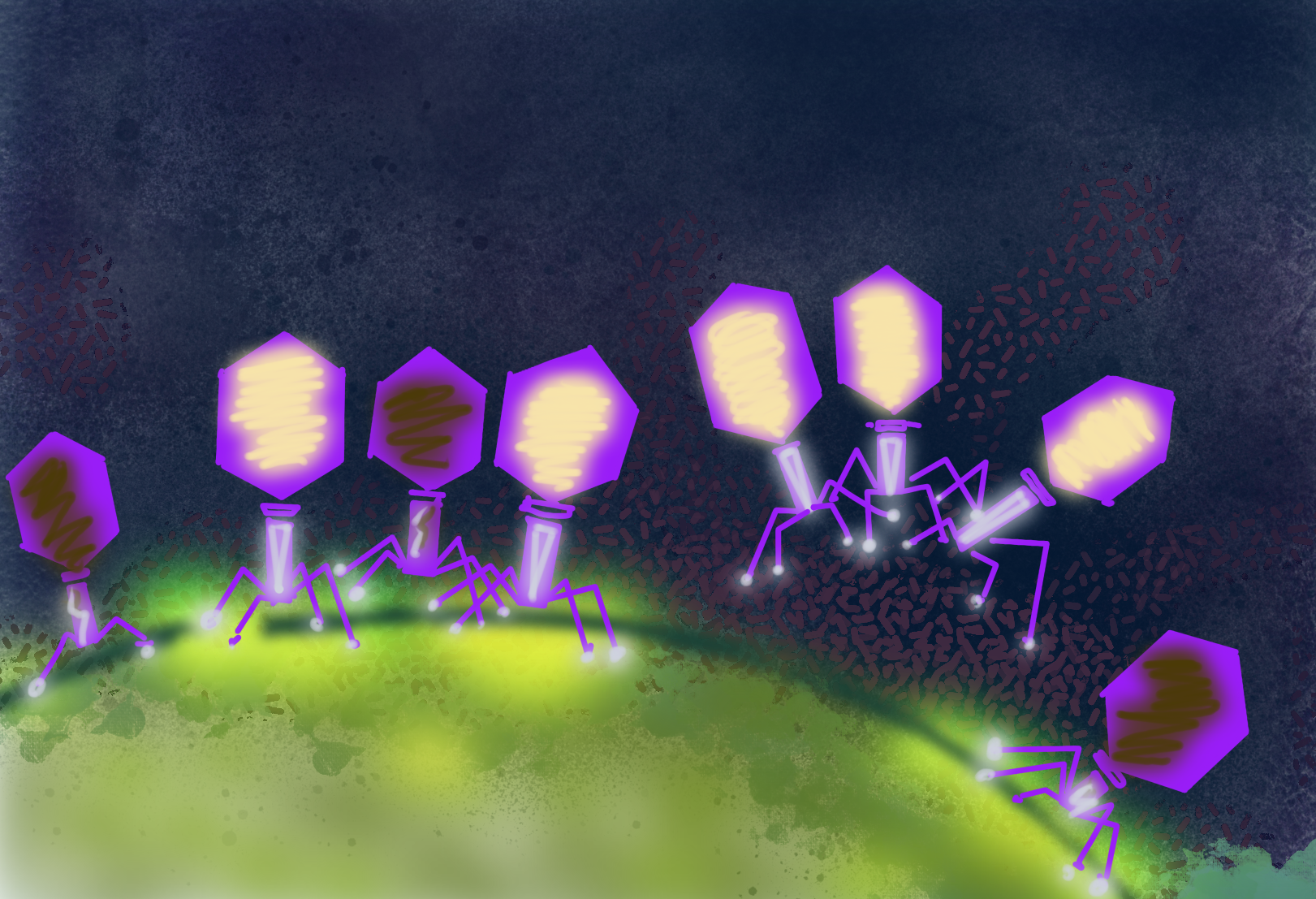Where Does Salt in the Amazon Air Come From?
For the first time, an international team of scientists has discovered the true origin of sodium salt in pristine Amazon air.

The Science
Tiny particles of sodium salt float in the air over the pristine Amazon basin. Why? The only explanation before now has been that winds blow marine particles hundreds of miles inland from the Atlantic Ocean. An international team of scientists used chemical imaging and atmospheric models to prove otherwise. They discovered that, during the wet season, fungal spores contribute as much as 69 percent of the airborne sodium salt particles in the central Amazon basin.
The Impact
Particles in the air act as nuclei to form ice and clouds. By understanding where and when sodium salt particles will be present and in what quantities, scientists can better predict cloud formation. They can also better understand the effect of changes in the terrestrial ecosystem on long-term climate patterns.
Summary
The research team collected samples of airborne particles during the beginning of the wet season from a pristine rainforest site in the Amazon region. They then applied a variety of chemical imaging techniques such as the Environmental Molecular Sciences Laboratory’s (EMSL) scanning electron microscope and secondary ion mass spectrometry. They also used the scanning transmission X-ray microscope in the Advanced Light Source to analyze particle size and composition. Results showed that locally emitted fungal spores contributed considerably to sodium salt particles, which were previously solely attributed to oceanic emissions. To evaluate the geographic distribution and frequency of high fungal spores over the Amazon basin, they conducted simulations using the Community Earth System Model. Modeling results suggested that fungal spores account for approximately 69 percent of the total sodium mass during the wet season and that their fractional contribution increases during the night. The work offers new insights into the composition of Amazon air and suggests areas for further study.
Contact
Program Managers
Shaima Nasiri and Paul Bayer
Department of Energy, Office of Science, Biological and Environmental Research
Principal Investigator
Alex Laskin
Purdue University
alaskin@purdue.edu
Funding
This work was supported by the U.S. Department of Energy’s Office of Science (Office of Biological and Environmental Research) through the Atmospheric System Research Program, and includes support of the Environmental Molecular Sciences Laboratory (EMSL), a DOE Office of Science User Facility. Additional support came from the Chemical Imaging Initiative at Pacific Northwest National Laboratory, the Advanced Light Source which is a DOE Office of Science User Facility at Lawrence Berkeley National Laboratory, and the National Science Foundation.
Publications
S. China, S.M. Burrows, B. Wang, T.H. Harder, J. Weis, M. Tanarhte, L.V. Rizzo, J. Brito, G.G. Cirino, P.-L. Ma, J. Cliff, P. Artaxo, M.K. Gilles, and A. Laskin, “Fungal spores as a source of sodium salt particles in the Amazon basin.” Nature Communications (2018). DOI: 10.1038/s41467-018-07066-4
Related Links
Fungal Spores are a Primary Source of Sodium Salt Particles in Amazon Air EMSL science highlightHighlight Categories
Performer: University , DOE Laboratory , SC User Facilities , BER User Facilities , EMSL , BES User Facilities , ALS
Additional: Collaborations , Non-DOE Interagency Collaboration



